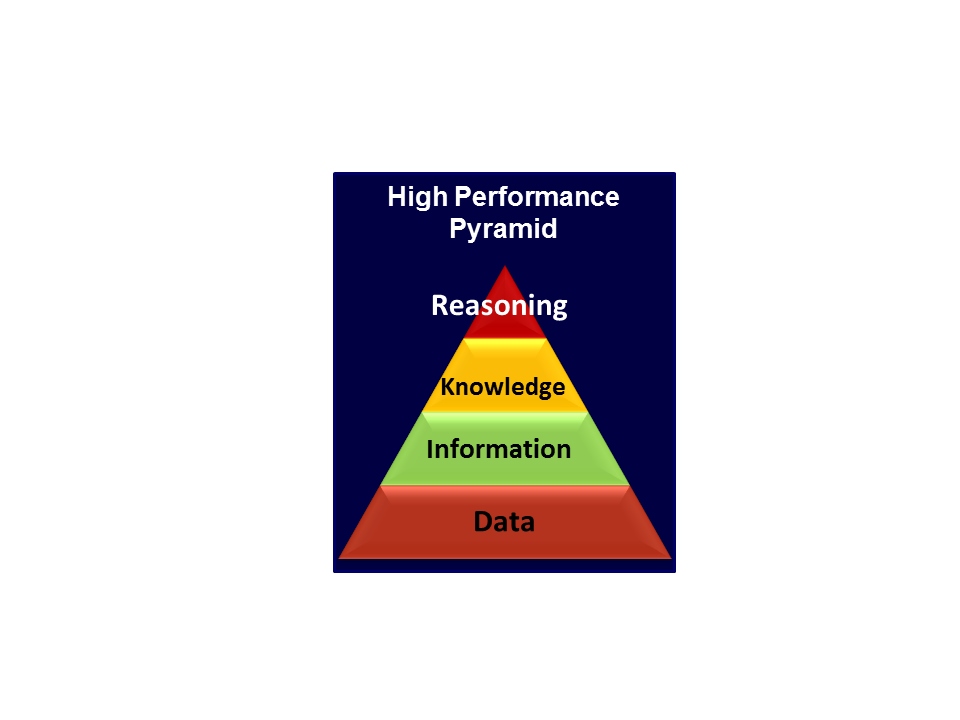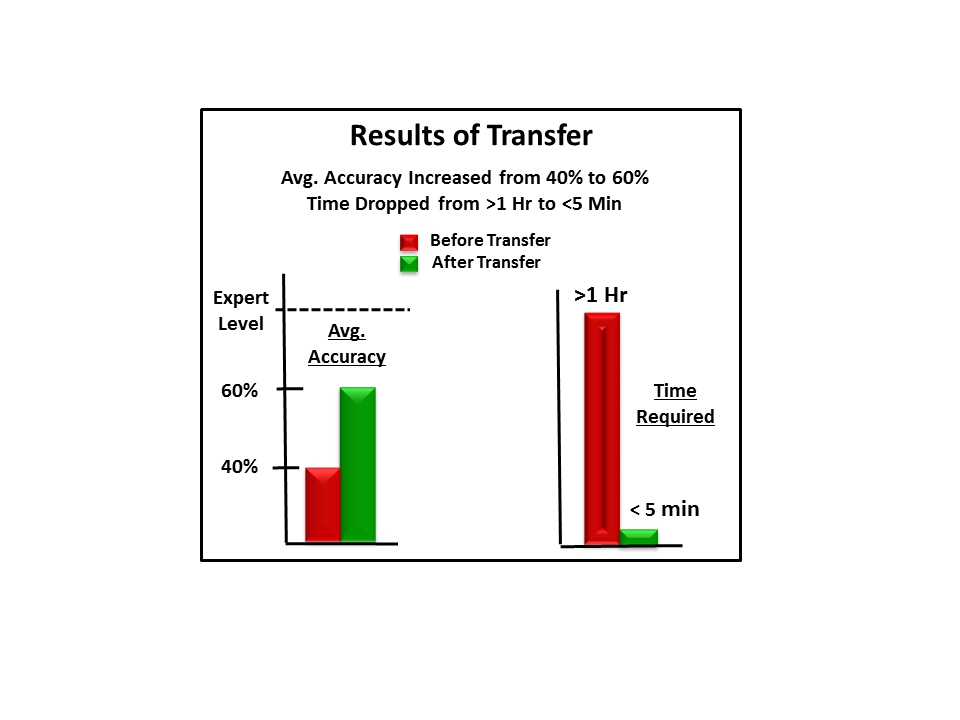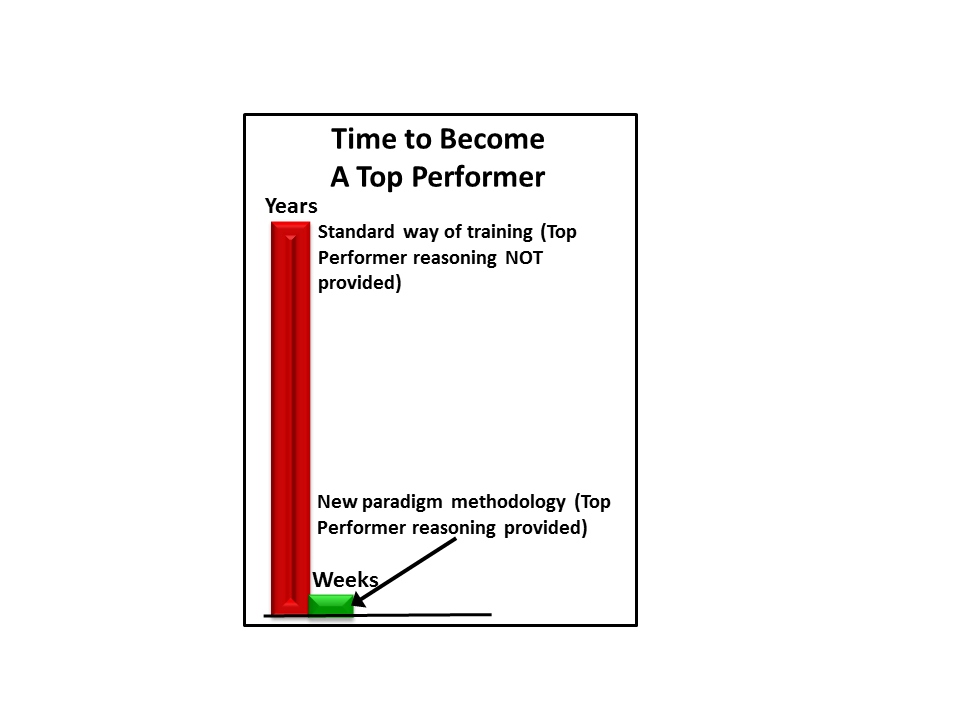One of the key tasks for a product manager is to provide direction to the sales force as well as the marketing team. Experience has shown that even the best direction, the best material and the best product in the market are often not enough to prepare reps. An effective sales rep or marketing team member must be one who can size up a situation and apply the correct approach to close the deal and gain product usage. While there are many factors that make up an excellent team member, superior reasoning is the trait that sets the top performer above all the rest.
A Paradigm Shift
Top performers produce superior results because they use superior reasoning skills. Research has shown that no amount of knowledge, information or data will create high-performing employees. According to a Harvard Business Review article, knowledge and data are useless without the reasoning skills to analyze them. To thrive in this world, many employees will require additional skills. The article goes on to say that “the standard way of training” is not adequate for developing these new skills.1 This “standard way of training” uses the old paradigm: Share knowledge, information and data.
Moving beyond the “standard way of training” is a major challenge because top performers’ superior reasoning—often called intuition—is automatic thinking that becomes a part of their unconscious minds through years of experience. That means top performers are unaware of their reasoning and cannot explain it to others so their reasoning is unknown and unavailable to be taught, transferred or shared with others. Individual employees must develop reasoning skills on their own over many years of trial and error experience. As a result, most employees never become top performers.
K.A. Ericsson’s2 research and Piaget’s3 work in reasoning have shown reasoning is a learned skill that can be captured, documented and taught. According to another Harvard Business Review article, research shows that expert reasoning and outstanding performance are the products of years of deliberate practice or coaching, not of any innate talent or skill.4
This makes the new paradigm: Capture, document and share superior reasoning. Under the old paradigm, knowledge is at the top of the High Performance Pyramid. With the new paradigm, reasoning is at the top. Knowledge is specific information about an event, experience, customer, object or idea. Reasoning is a thinking process that creates insights, decisions, judgments or actions.
Top performers produce exceptional results because they use superior reasoning. Superior reasoning is the ability to accurately identify and correctly use relevant knowledge, information, data and cues from tacit human interactions—to make the right decisions that produce the right results.
Top Performers Are Different
A study conducted by a well-known physician at a major medical school showed that experts—aka top performers—are different.
Conducting the study required making 85 one-minute silent videos of males who arrived consecutively at an emergency room complaining of chest pain. The physician conducting the study and 26 other experienced MDs viewed the videos. Each was asked to do only one thing: Identify which patients were having heart attacks. With only one minute to make each decision, they had to use reasoning that had become automatic thinking.
(The video of the physician explaining the difference between expert and experienced non-expert performance can be viewed at http://youtu.be/dxhQ4eBOWFs. While the video is a medical example, Tufts University conducted tests that showed that sales reps also use automatic thinking when dealing with customers.5 This Tufts study did not attempt to show that experts are different.)
A very small number of experts produced superior performance and the average performance was at best mediocre. All 26 MDs and the MD who conducted the study were experienced and viewed identical information for 85 male patients. Fourteen of these patients were having a heart attack. Only four doctors correctly identified the 14 heart attacks—MIs—and gave no false positives. That is 85 correct answers and no wrong answers. The likelihood of this happening by chance is virtually zero (p<0.00001). Those doctors knew what information was relevant and how to use it to come up with the right answer.
Eleven doctors missed every MI and identified up to 20 false positives. That is up to 34 wrong answers. That result is also highly unlikely to have happened by chance. They viewed the same videos as the doctors who got all the right answers; but they either identified the wrong information or they used the right information incorrectly when making their decisions.
In the debriefing following the exercise, the doctors who were 100% right could not explain their reasoning because it was automatic unconscious thinking and they were not aware they were using it. The doctors who got every answer wrong either obtained irrelevant information by observing the videos or processed the information in a manner that led them to erroneous conclusions.
New Paradigm Methodology
The new paradigm methodology enables organizations to rapidly bring the performance of most people very close to that of top performers in a short period of time. The following example was presented and published at the 2011 National Diagnostic Error in Medicine Conference. The presentation was co-authored by experts in the new paradigm methodology: An expert internist, an expert emergency room physician and professors from the oldest continuously operating university medical education department in the world.
The emergency room physician reported that when he used the new paradigm methodology to transfer his reasoning:
“Second-year residents understood my reasoning immediately and incorporated it into their thinking process in a few hours. First-year residents learned fairly fast, but needed a little coaching on terms and definitions. Medical students took several days. The methodology makes it quite easy to transfer reasoning and the students loved this method of learning.
After the transfer, medical students and residents were in awe of how accurately they had formulated a course of action that matched what I had written in the charts. Both residents and medical students were able to diagnose patients as if they had many years of experience. Their average diagnostic accuracy immediately went from 40% to 60% and the time required to accurately diagnose a patient dropped from over one hour to less than five minutes.”6
These two medical examples show the power of correct reasoning skills and the ability to transfer these skills in a short period of time, increasing the performance of all study subjects.
Application to the Marketing and Sales Environment
With the “standard way of training,” it takes years of experience for members of a marketing team and sales force to become top performers. Since team members and sales reps are not given an actual top performer’s reasoning, they must develop it on their own through years of experience just as the top performers did.
With a new paradigm methodology, marketing staff and sales reps can make smarter decisions and achieve high-performance levels similar to a top performer in days or weeks rather than years. Novice and ordinary staff and sales reps are able to use the actual reasoning of top performers. This enables them to quickly and accurately identify and understand sales data, customer knowledge and cues from tacit customer interactions and then correctly use them to make the right decisions that grow sales and improve profit margins.
Continuously Deliver Improved High Performance
The new paradigm methodology is not a one-time process. It is a continuous improvement process that enables members of a marketing team and sales force to make better, smarter and faster decisions through the sharing of reasoning among colleagues and the use of actual performance data for self-assessment, which enables them to adjust their reasoning and make certain that it is based on reality. Reasoning that creates superior performance is also identified by a manager or governance team and shared with others enterprise-wide.
Example: To achieve high performance, a regional sales manager for a telecommunications company implemented a new paradigm methodology. The reasoning of the best sales rep was captured in interviews, organized, formatted and fully documented. The captured and organized reasoning was transferred to other sales reps in the region by having them use the top performer’s reasoning to do their jobs. Within weeks, novice and ordinary sales reps were performing at a level similar to the top performer.
After the transfer was complete and the top performer’s reasoning had been put into practice, regional sales reps were empowered to personalize and improve their copy of the top performer’s reasoning. They used performance data and analytics to adjust their reasoning to make certain it was based on reality, to identify the need for improved customer interaction and to determine what action to take that should improve sales and customer relationships. As reps shared their reasoning with colleagues in the region, they incorporated each other’s improvements into their own reasoning.
As the regional manager reviewed each rep’s performance, she correlated reasoning and sales performance and then notified all reps throughout her region when she identified superior reasoning. According to the regional manager, “We grew the region from the lowest sales volume in the company to the highest within 18 months by harnessing the collective reasoning of the regional sales force.”
The new paradigm methodology has been applied to many business situations from executives to physicians, all with similar results.
Meeting Marketing Challenges with a New Paradigm Methodology
The new paradigm methodology delivers the superior reasoning skills that members of a marketing staff and sales force need to become high performers. It also enables an organization to retain the reasoning skills and abilities of every team member even if they leave. In addition, new hires can start their job by using the same reasoning as the person they replace or the reasoning of the best staff member or sales rep and then personalize and improve their reasoning by bringing key portions of their own reasoning to the job. That means the new hires may achieve even higher performance than the people they replace.
Making all members of the staff as successful as the best team members is a big challenge. But meeting that challenge through the new paradigm methodology can enable an organization to quickly create a high performance marketing and sales team that makes smarter, better and faster marketing and sales decisions that improve sales performance, market share and profitability.
References
1. Harris, Jeanne. Data Is Useless Without the Skills to Analyze It. s.l.: Harvard Business Review, 2012.
2. Ericsson, K. Anders and Towne, Tyler J. Expertise. Wiley Interdisciplinary Reviews: Cognitive Science. 2010, Vol. 1, 3 (p 404-416).
3. Piaget, Jean. The Language and Thought of the Child. New York: Harcourt, 1926.
4. Ericsson, K. Anders, Prietula, Michael J., and Cokely, Edward T. The Making of an Expert. Harvard Business Review. 2007.
5. Ambady, N., Krabbenhoft, M. and Hogan, D. The 30-Sec Sale: Using Thin-Slice Judgments. s.l.: Journal Of Consumer Psychology, 2006, Vols. 16(1), 4–13.
6. Tice, S., McNutt, R., Tice, P., Elstein, A., Schwartz, A., Bordage, G., Abrams, R., and Stuckey, R. Reducing Cognitive Errors By Capturing And Disseminating Expert Reasoning. Chicago, IL: Diagnostic Error in Medicine Conference, 10/2011.









